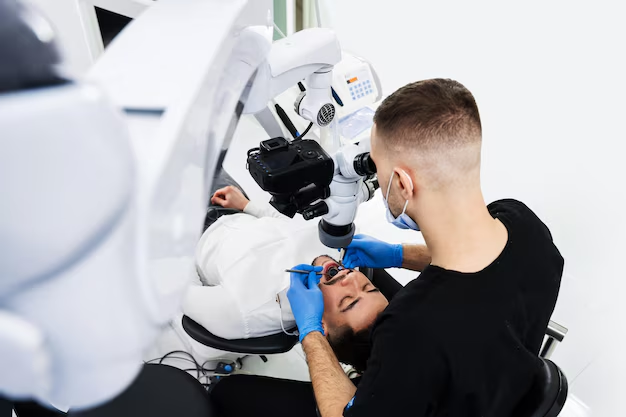Understanding Cataracts: Are They Curable?
Cataracts are a common concern as they often become more prevalent with age, leading many to wonder if they are curable. This article delves deep into the nature of cataracts, exploring whether they are indeed curable, the options available, and what you need to know if you're navigating this journey.
📌 What Are Cataracts?
Cataracts are the clouding of the eye's natural lens, which can lead to blurry vision, difficulty seeing at night, and other visual impairments. While they develop slowly, they can affect daily tasks and quality of life over time.
Common Symptoms of Cataracts
- Blurry Vision: A noticeable cloudiness impacting clarity.
- Sensitivity to Light: Bright lights may be glaring or uncomfortable.
- Halos Around Lights: Circular lights may appear with halos at night.
- Yellowing Vision: Colors may appear faded or yellowed.
- Double Vision in One Eye: A ghost image can occur in the affected eye.
🌟 Can Cataracts Be Cured?
The term "curable" in the context of cataracts can be somewhat misleading. While there is no medicinal cure to reverse cataracts once they develop, cataract surgery is a highly effective procedure to remove the cloudy lens and replace it with an artificial one. This procedure restores vision and is regarded as a practical cure.
The Role of Surgery in Treating Cataracts
Cataract surgery is one of the most common and successful surgeries worldwide, offering a significant improvement in vision for most patients. Here’s a simple breakdown of the process:
- Pre-Surgery Assessment: Your eye doctor evaluates the extent of the cataract and discusses your lifestyle and visual needs.
- Outpatient Procedure: The surgery is usually quick, performed under local anesthesia, and often allows you to go home the same day.
- Lens Replacement: The cloudy lens is removed and replaced with a clear artificial lens, known as an intraocular lens (IOL).
🏥 What Types of Intraocular Lenses Are Available?
Choosing the right lens is an important aspect of cataract surgery. Here are the common types of IOLs:
- Monofocal Lenses: Designed for one distance, usually set for distance vision with glasses often needed for reading.
- Multifocal Lenses: Provide both near and far vision, potentially reducing the need for glasses.
- Toric Lenses: Designed to correct astigmatism, providing clearer vision at a specific distance.
👀 What to Expect After Surgery
Post-surgery recovery is typically straightforward, yet understanding the process can help set the right expectations.
Recovery Timeline
- Immediate Aftermath: Vision might be blurry initially, but clarity improves as the eye heals.
- First Few Days: Light sensitivity or mild discomfort may occur, usually managed with prescribed medication.
- Follow-Up Visits: These are crucial to ensure the eye is healing correctly.
Long-Term Care
- Protective Measures: Wearing sunglasses outdoors and avoiding strenuous activities initially can help ensure a smooth recovery.
- Lifestyle Adjustments: Maintaining a healthy lifestyle and regular eye check-ups can promote eye health.
🛑 Can Cataracts Be Prevented?
While age is a significant factor, there are steps people can take to potentially delay the onset of cataracts:
- Healthy Diet: Consuming a diet rich in antioxidants can be beneficial.
- UV Protection: Regular use of sunglasses that block UV rays.
- Regular Eye Exams: Early detection through routine check-ups can aid in effective management.
🚀 Exploring Non-Surgical Options
Some people wonder whether non-surgical treatments might be on the horizon. While research continues into drops and medications that could potentially delay the progression or onset of cataracts, surgery remains the only definitive treatment.
📝 Key Takeaways
- Surgery as a Cure: While no drops reverse cataracts, surgery effectively restores vision.
- Proactive Prevention: A healthy lifestyle and UV protection can support eye health.
- Consultation is Key: Regular consultations with an eye care professional are essential for managing cataracts.
📄 Summary of Key Points
Here's a quick recap for easy reference:
| Key Topic | Summary |
|---|---|
| Cataracts Basics | Clouding of the lens causing blurry vision. |
| Cure | Surgery is the effective treatment. |
| Types of Lenses | Monofocal, Multifocal, and Toric options. |
| After Surgery Care | Recovery involves lifestyle adjustments. |
| Prevention | Healthy habits may delay onset. |
🌱 Embrace Proactive Eye Care
Understanding cataracts is not just about knowing the cure but embracing a lifestyle that protects and nurtures our vision for years to come. Whether you're exploring preventive care or treatment options, taking informed steps can help lead to positive outcomes.
By remaining informed, taking preventive measures, and consulting with professionals, you can effectively manage cataracts and maintain a clear vision, benefiting both your health and lifestyle.
